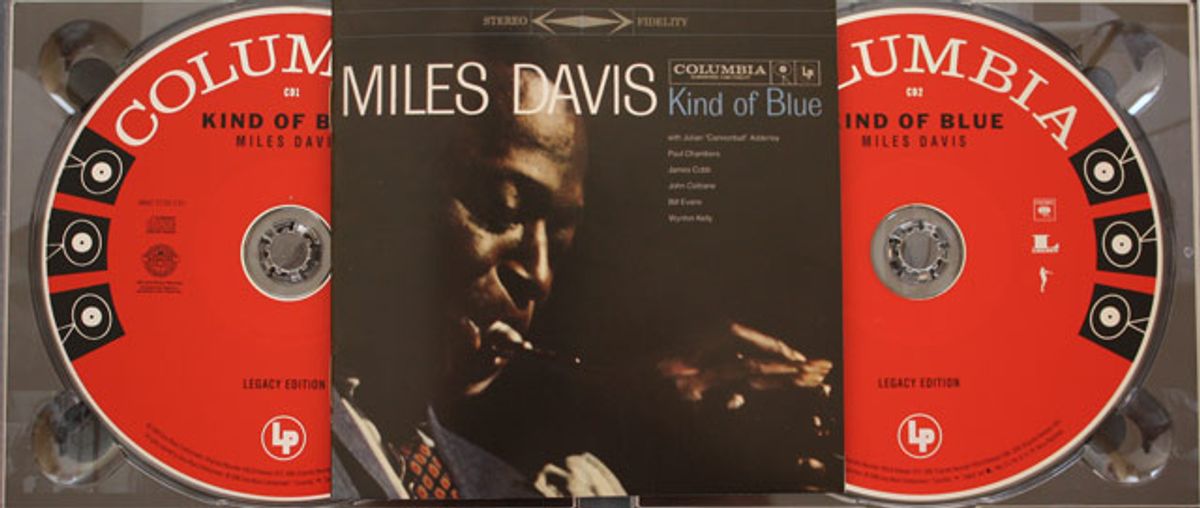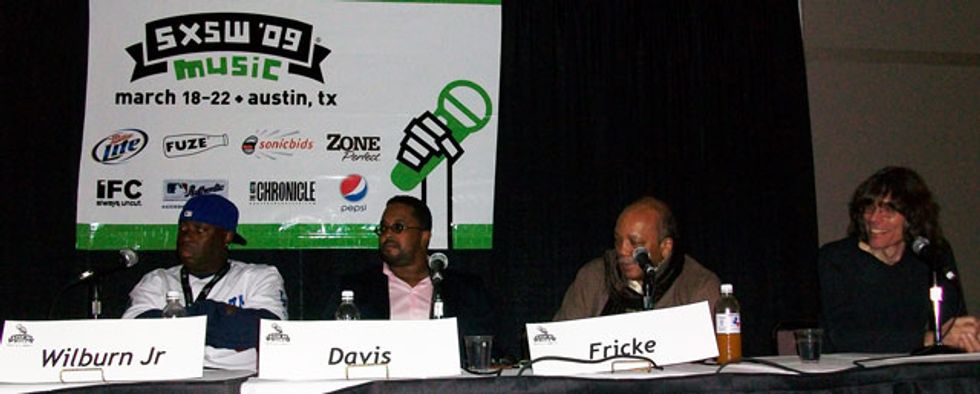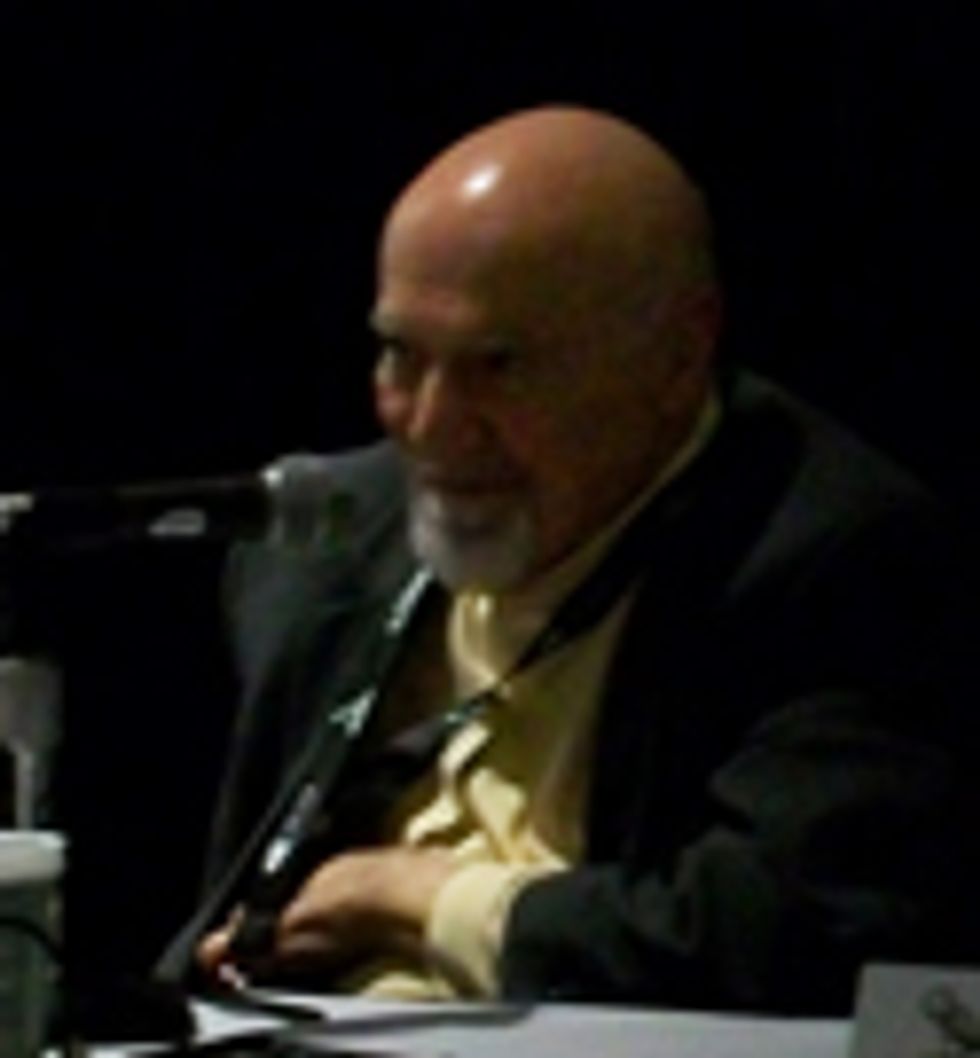
What We Can Learn from Miles as Kind of Blue Turns 50
The new Legacy Edition of Miles Davis' Kind of Blue comes with plenty of extras: over two hours of audio including false starts, alternate takes, studio dialogue and non-album tracks, a 17 minute live verson of "So What," and a 24-page booklet
Austin, TX (March 20, 2009) - If there’s one album without a guitar on it that you should own, it should be and probably is Miles Davis’ Kind of Blue, the result of two recording sessions totaling 10 hours that would go on to become the most popular jazz album of all time (RIAA certified quadruple platinum). This legendary album, cut 50 years ago on a slightly fast, tube-driven, three-track tape deck at New York City’s famous 30th Street Studio (which, unfortunately, was razed for the construction of an apartment building), had a ripple effect throughout the entire universe of music. Its ground breaking introduction of the modal concept turned jazz upside down but also influenced everyone from the Byrds and the Doors to Santana and the Allman Brothers. The album continues to teach us new things today, revealing new complexities with age just a like a fine wine.
At a recent South by Southwest panel discussion called “Kind of Blue at 50,” a group of music experts and people close to Miles shared stories about the trumpeter and the legendary Kind of Blue sessions. In attendance was George Avakian (worked for Columbia Records and signed Miles), Vincent Wilburn, Jr. (played drums for Miles from ’84-’87), Erin Davis (Miles’ youngest son who also played percussion for him and runs Miles Davis Properties), David Fricke (music guru best known as a writer/reviewer for Rolling Stone) and moderator Ashley Kahn (who wrote the book, Kind of Blue: The Making of the Miles Davis Masterpiece). As if that weren’t enough expertise to talk about all things Miles, a last minute straggler sitting in the back of the room was invited to join the panel. That man was none other than legendary music producer Quincy Jones.
 Vincent Wilburn, Jr., Erin Davis, Quincy Jones, David Fricke |
So, what can guitarists take away from this gathering of music industry heavyweights as they discussed Miles Davis and his most significant work? A lot. The principals that guided Miles explain why he has been described as nanotechnology. The micro components of his music and ways can seem dissonant and counterintuitive, but together they produce results that have fascinated music fans, musicians and scholars ever since. Here’s a sampling of tips that, in true Miles fashion, should challenge you:
Ten Miles Davis Tips for Guitarists
1. Play Lyrically
Kind of Blue is celebrated for its accessibility as well as its complexity. Listeners are challenged by chord structures that broke conventions of the day but they’re also welcomed into the musical exchanges that take place due to their melodic, conversational style. People talk and think lyrically. Musicians who play lyrically are able to connect with their audiences with ease.
 Producer George Avakian |
-George Avakian
“The songs aren’t over done, but they still draw you in. The Paul Chambers bass lick in “So What” is so inviting and fluid but isn’t over the top–it goes within the song. It has this hooky-quality like Stones’ “Satisfaction.” They explored the effectiveness of the hooks and melodies rather than just showing off their abilities.”
-David Fricke
2. Experiment with Boundaries
Miles wasn’t just a musician, he was an artist. He colored outside the lines. He blended genres. He challenged himself and everyone around him.
“His last album was a hip-hop recording, so I mean he tried and did everything in the musical world.”
-Erin Davis
 Author Ashley Kahn |
-Ashley Kahn
3. Appreciate the Ballad
The tempos are not extreme on Kind of Blue, but metal guitarists are often quoted as saying the album is a great inspiration. Ballads have their conventions for exploring and breaking. Slow songs give you more room for exploration.
“Miles was the best ballad player since Louie Armstrong and that is what I felt was going to make him popular with the world at large.”
-George Avakian
4. Don’t Dwell on the Past
Miles never wanted to, and rarely played much of what he had done in the past. He lived to create and said that without that ability there’d be nothing to live for. In other words, he rarely spent his time playing in the sense of repeating or recreating what he already knew. He was always creating.
“I remember one time listening to Miles’ Quintet stuff on my headphones while we were in a car together and he could hear it. He told me to shut that stuff off because he didn’t want me to listen to any of his old stuff.”
-Vincent Wilburn Jr.
“I see a lot of artists who have done great works in the past, but they kind of just live off that. You’ve got to push yourself and cross boundaries in order to grow as a musician, as a person.”
-Erin Davis
5. Utilize Non-Notes
No one utilized non-notes for musical effect like Miles did. For some reason, when we play guitar we are conditioned to put 99.9% of our focus on the notes we’re playing. The spaces without notes in Kind of Blue are a big part of that record. It gives listeners time to absorb and process, both between passages and within phrases.
“The powerful thing with Kind of Blue is the space and information. There’s a lot of air in that record in the sense you don’t feel overloaded and you can take in each note. You don’t feel confronted with the music. You feel as if you’ve been invited into something very special.”
-David Fricke
“Miles was the Picasso of jazz. He really knew how to use space just like a painter.”
-Quincy Jones
6. Consider the Art of Spontaneity
Kind of Blue was largely unrehearsed. What you hear on the album is pretty much the first and last time that exact assembly of musicians played those songs together. It wasn’t a free-for-all, though. Miles gave the musicians charts of modal structures with the idea being to focus on the space around the structures. Great improvisation is a compositional activity.
“The whole record sounds as if it was thought out, prepared and completely sketched out, but we know that wasn’t the case as most of the cuts were first takes.”
-George Avakian
7. Be a Talent Scout
Part of Miles’ genius was his ability to find phenomenal musicians as they were budding and challenge them. Miles often said, “Geniuses are selfish,” but his track record shows otherwise in many ways. He had an innate ability to recognize new talent and wanted to share the stage with those players. He wanted to explore with them. He could have had the most established players with the biggest names on Kind of Blue but instead opted for mostly new, unknown talent. Not surprisingly, those musicians would become stars in their own right: John Coltrane (tenor), Cannonball Adderley (alto), Bill Evans (piano), Wynton Kelly (piano), Paul Chambers (bass) and Jimmy Cobb (drums).
“I think that [talent scouting] was one of his greatest talents because he would bring a guy into the band and you’d be like ‘why would he want him here?’ but it would always work out. He always saw what he wanted, even in other musicians.”
-Erin Davis
“The fact that he could throw material at them that would be interrupted and give the guys around him a chance to reveal their own impulsive geniuses was one Miles’ own strokes of genius.”
-Ashley Kahn
8. Regard Music as “In the Moment”
Miles trusted his producers and engineers and didn’t like post production. His focus was on the music in the moment. He didn’t like the idea of editing music to make it sound different than the way it was performed because he didn’t want anyone to second guess a musician’s intent.
“Those things are there and they are done; they were right when they [were] first done. They were done at the right hour, on the right day and it happened, but it’s over. It’s on the record as it was completed.”
-Miles Davis in a 1986 interview with NPR’s Ben Sidran
9. Share What Fascinates You
The panel members talked about how Miles was constantly sharing music with people he worked with, giving them albums and tapes to check out. In other words, there’s a great conversation about music to be had with your band mates that can actually take place when you’re not even in the same room.
“He never listened to anything he did in the past. He was always listening to other people’s stuff and giving it to us like homework. I can remember three albums he specifically gave me and told me to study. Those albums were Jimi Hendrix’s Band of Gypsies, James Brown’s The Big Payback and Otis Redding’s The Immortal Otis Redding.”
-Vincent Wilburn Jr.
10. Be Like Sinatra
Miles used strategies from Frank Sinatra’s playbook. As Quincy Jones put it, “Miles and Frank had more bark than bite. They just wanted to terrify you.” Like Frank, Miles critiqued his band mates’ performances honestly but did so soon after a show. His band mates were always conscious of his critiques and that brought out the best in them.
“He always said not to listen to ourselves that night after a gig, but he did. After that, he’d call us up and well… you know… but that brought out the best in us. We always wanted to make him happy and proud by playing out butts off for him. Every night was a challenge because he kept raising the bar, so we had to come with it or we wouldn’t be on the tour the next day.”
-Vincent Wilburn Jr.
“He reminded me of Sinatra in that they didn’t believe in second takes. They both just believed in what was produced in that moment was as good as it was going to get.”
-Quincy Jones
Parting Thought
The above tips may not be a road map for creative genius or a successful career, nor are they even applicable to musicians of all skill levels. In fact, those same principals led Miles to record some albums late in his career that can be described as hard to listen to for all but the most die-hard of Miles aficionados. “Not everyone gets it,” is a phrase that has accented discussions about various Miles projects over the years and he clearly preferred it that way. There are certainly Miles projects that people do “get,” however, and none more so than Kind of Blue, the masterpiece of a true musical genius.
“People ask me to play those old songs and I tell them to go buy the record. It’s still there. What you like is on the record, you don’t like me. Don’t like me for Kind of Blue, like me for what I’m doing right now. If I wasn’t an artist or couldn’t create, I’d just want to be dead. It’s selfish, I know, but geniuses are selfish.”
-Miles Davis excerpted from a 1986 interview with NPR’s Ben Sidran


